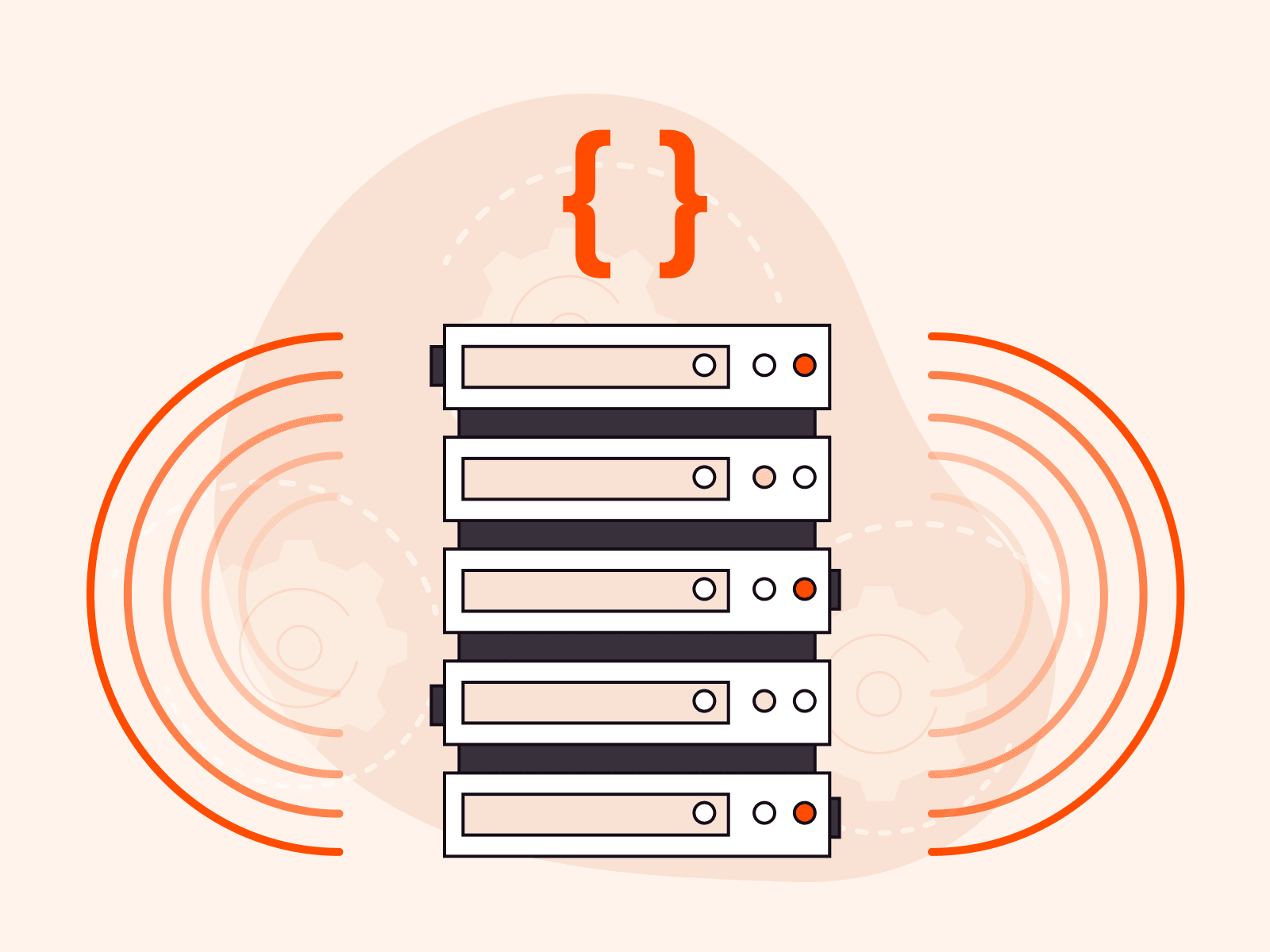In today’s websites and applications, there are many sections or even pages that are generated according to user properties and preferences. This means that part of the website content is assembled and delivered dynamically as a response to the user’s request.
Originally, CDN providers delivered only static web content by caching it on servers around the world, thereby reducing the delivery time to users. They are not designed for dynamic content acceleration.
In this article, we explore what makes dynamic content special and how Gcore CDN can speed up its delivery.
What is dynamic content?
Generally speaking, dynamic content is the content on web pages that is generated when end users request it. Content generation technologies include ASP, JSP, PHP, Perl, CGI requests, and API calls (POST, PUT, and PATCH requests).
What the final page with dynamic content will look like depends on distinct factors such as the behavior and preferences of the users on a site, their geolocation, and so on.
By using dynamic content, businesses are able to personalize pages. For example:
- Online stores adapt their product feeds to their customers. Users with different order histories and profiles are served different recommendation feeds, which makes it possible to offer more relevant products and increase conversions.
- News outlets offer different versions of their website for different readers. Subscribers who have paid for a subscription see full versions of the website, tailored to their interests. For those without a subscription, only the introductory part of the general news block is displayed, along with a pop-up with an offer to purchase a subscription.
- Franchises localize their sites depending on geolocation. The site’s interface (language, addresses, hours of operation) automatically changes depending on the region in which the user requesting the page is located.
With the proliferation of dynamic content on the modern web, there is a challenge in delivering it.
What is the challenge of dynamic content delivery?
If a business is focused on the global market, content needs to reach users quickly, no matter how remote they are from the origin server. To optimize the delivery of static content, there is a traditional CDN infrastructure consisting of caching servers located around the world.
Dynamic content, however, cannot be cached, because it is generated individually for each user. This makes it difficult to use traditional CDNs for sites that contain both types of content. Static site files will be delivered to users from the nearest caching Edge server, while dynamic content will be proxied from the origin, resulting in increased download time.
That said, it is still possible to optimize dynamic content delivery. To do so, choose CDNs that provide state-of-the-art delivery acceleration methods. Gcore’s next-gen Edge network architecture uses everything available to accelerate dynamic content delivery as much as possible, and we will look at each of these technologies in detail in this article.
How does Gcore’s next-gen CDN accelerate dynamic content delivery?
1. Optimized TCP connections
For the origin server to respond to a user request for dynamic content on a site via HTTP, a TCP connection must be established between them. The TCP protocol is characterized by reliability: when transmitting data, it requires the receiving side to acknowledge that the packets were received. If a failure occurs and the packets are not received, the desired data segment is resent. However, this reliability comes at the cost of the data rate, slowing it down.
Gcore CDN uses two approaches to optimize the speed of the TCP connection:
- Increasing the congestion window in TCP slow start. TCP slow start is the default network setting that allows you to determine the maximum capacity of a connection safely. It incrementally increases the congestion window size (the number of packets before confirmation is required) if the connection remains stable. When a TCP connection goes through an Edge network, we can increase the congestion window size because we are confident in the stability of the network. In this case, the number of packets will be higher even at the beginning of the connection, allowing dynamic content loading to happen faster.
- Establishing persistent HTTP connections. By using the HTTP/2 protocol, our Edge network supports multiplexing, which allows multiple data streams to be transmitted over a single, established TCP connection. This means that we can reuse existing TCP connections for multiple HTTP requests, reducing the amount of time needed for traversal and speeding up delivery.

2. Optimized TLS handshakes
HTTPS connections use the TLS cryptographic protocol, which secures data transmission and protects it from unauthorized access. To establish a secure TLS connection, three handshakes must be performed between the client and the server during which they exchange security certificate data and generate a session encryption key.
It takes a significant amount of time to establish a secure connection. If the RTT (round-trip time) between the origin server and the client is 150 milliseconds, the total connection time will be 450 ms (3 × 150 ms):

When the source server is connected to the Gcore CDN, TLS handshakes are performed with the help of intermediaries: Edge servers located as close as possible to the user (client) and the origin server. Edge servers belong to the same trusted network, so there is no need to establish a connection between them each time; once is sufficient.
Through this method, the connection will be established in 190 ms (more than twice as fast). This time includes three handshakes between the client and the nearest edge server (3 × 10 ms), one handshake between servers in the Edge network (130 ms), and three handshakes between the nearest Edge server and the source (3 × 10 ms):

3. WebSockets support
WebSocket is a bidirectional protocol for transferring data between a client and a server via a persistent connection. It allows for real-time message exchange without the need to break connections and send additional HTTP requests.
In a standard approach, the client needs to send regular requests to the server to determine if any new information has been received. This increases the load on the origin server, reducing the request processing speed. It also causes delays in content delivery because the browser sends requests at regular intervals and cannot send a new message to the client immediately.
In comparison, WebSocket establishes and supports a persistent connection without producing additional load by re-establishing the connection. When a new message appears, the server sends it to the client immediately.

WebSocket support can be enabled in the Gcore interface in two clicks.
4. Intelligent routing
Dynamic content delivery can be accelerated by optimizing packet routing. In the Gcore CDN, a user’s request is routed to the closest Edge server, then passes within the network to the closest server to the source.
Network connectivity is critical to achieving high-speed delivery, and Gcore has over 11,000 peering partners to ensure this. Once inside the network, traffic can then bypass the public internet and circulate through ISP networks.
We constantly measure network congestion, check connection quality, and perform RUM monitoring. This allows our system to intelligently calculate the best possible route for each request our Edge network receives and increases the overall delivery speed, regardless of whether you’re using static or dynamic content.
5. Content prefetching
Prefetching is a technique to speed up content delivery by proactively loading it to Edge servers before end users even request it. It is traditionally associated with static content delivery. But it also can accelerate dynamic content delivery by preloading static objects used in dynamically generated answers.
In this case, when an end user requests something, the web server will generate the content with linked objects already on the Edge servers. This reduces the number of requests to the origin server and improves the overall web application performance.
How to enable dynamic content delivery in Gcore’s CDN
To enable dynamic content acceleration, you need to integrate the whole website with our CDN by following these step-by-step instructions. In this case, you also need to use our DNS service (it has a free plan) to connect the domain of your website with our DNS points of presence for better balancing.
What’s next?
Modern applications will be more customized and tuned to custom parameters. Providing users with the most relevant content could become a significant competitive advantage for online businesses.
Going in parallel with a constant need for decreased latency, this tendency is pushing forward serverless computing, an emerging technology that is focused on running an application code right on cloud Edges. In addition to overall simplifying the app deployment process, it will open a wide range of opportunities for content customization.
We are developing serverless computing products to provide users with the best possible performance and improve their overall web experience. We will keep you informed about the progress and significant updates.
Discover Gcore CDN possibilities that give your business access to a high-capacity network with hundreds of Edge servers worldwide. It can improve your web application performance and will allow you to personalize the user experience.
Related articles
Subscribe to our newsletter
Get the latest industry trends, exclusive insights, and Gcore updates delivered straight to your inbox.






